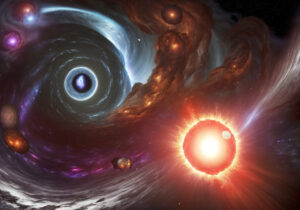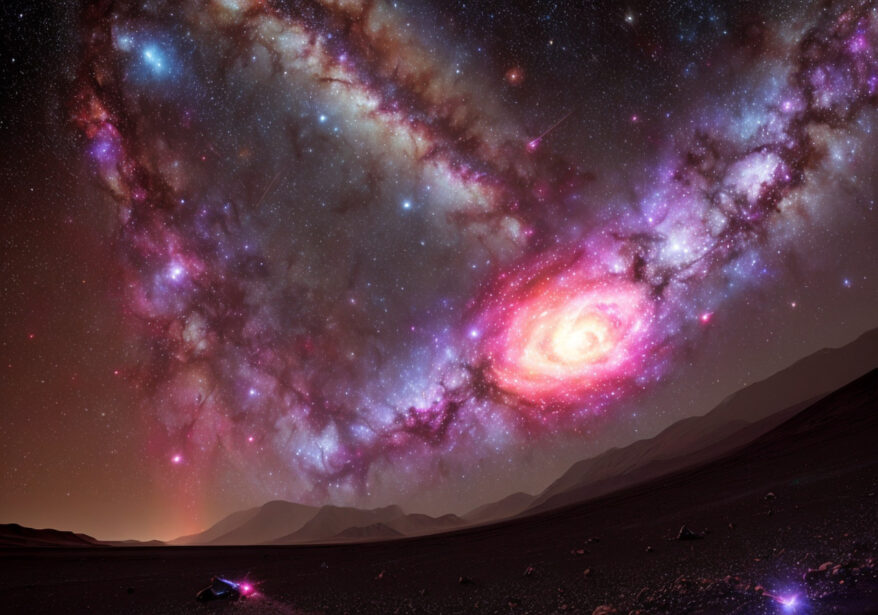You are Dr. Arlen Saidi, atmospheric physicist. But on nights like this, you’re also an artist.
You’re standing beneath the clearest sky in the southern hemisphere. The Atacama Desert holds its breath as you adjust your mount and press the remote shutter on your astrophotography rig. It’s early May, the galaxy’s central bulge is rising, and Sagittarius A* is stunning tonight — brighter than you’ve ever seen it.
Too bright.
Your exposure timer pings. The sensor is saturated.
“That’s not possible,” you whisper.
But it is.
The Star That Shouldn’t Have Died

Not with silence. Not with invisibility.
Sagittarius A*, once dormant, has erupted in a tidal disruption event. A star ten times the size of our Sun was pulled into streamers of hot plasma and chewed by gravity. Twin jets of relativistic energy burst from the core like the scream of a dying god.
And for reasons still unclear, one of those jets is pointed at us.
You knew this was theoretically possible.
You didn’t think you would live to see it.
Firelight on a Hollow Moon
The world doesn’t end overnight.
First comes the visual effect: a shimmering aurora over the desert, painting the stars with violet and ultraviolet streaks. Your camera’s firmware crashes. Mateo, the local stargazer, thinks it’s beautiful.
“The galaxy is breathing,” he says.
Then your instruments show a drop in ozone.
Then a plunge.
Then something impossible: UV-C, normally filtered by the atmosphere, now bathing the surface in doses that would sterilize petri dishes.
The Panic and the Preachers
As news spreads, the world splits.
Governments scramble to respond. Emergency broadcasts warn populations to remain indoors, avoid daylight, and wear UV-reflective clothing. Schools close. Flights are grounded. Communication satellites blink in and out of coherence.
Crops wilt in minutes. Fish float belly-up in shallow tropical waters. Mutations spike in lab mice. Photovoltaic sensors fail. Cancer wards overflow.
“This is Revelation,” says Sister Calyx, who wanders into your camp holding a Bible stained with dust and tears. “The moon is hollow. The stars fall.”
Bruno, sweating through his tactical vest, laughs bitterly. “It’s not wrath. It’s weakness. Masculinity’s down. Testosterone’s down. We stopped lifting, and now the planet stopped resisting.”
You stare at him, stunned.
“It’s scalar resonance,” he adds. “I read Marcus Cole. You’ll see.”
The Science of Doom
You connect with colleagues in France, Japan, Namibia. The story is always the same: ozone collapsing. Marine ecosystems shredded. UV index over 20. Mutation events in surface biota. Human error climbing in night shift operators. Software degrades. Machines misfire.
And still the beam from Sagittarius A* continues.
It’s over 27,000 light-years away, but it’s flooding our atmosphere with X-rays, gamma radiation, and cosmic particles.
Your notes trace the spiral:
- Magnetic field disruption
- Ozone depletion
- DNA damage
- Ecosystem collapse
- Societal breakdown
“This is a sterilization event,” you whisper.
Earth Responds
But humans are nothing if not reactive.
China launches weather balloons filled with UV-absorbing chemicals. The EU deploys emergency sulfate aerosol injections to reflect sunlight. South Africa builds mass shelters in ancient mines. Brazil rolls out a vitamin D saturation campaign.
You help lead a task force in Chile developing UV mesh canopies made from mylar and polymerized chitin. The materials are crude. The shielding, patchy. But it’s something.
Night becomes the new day. Markets shift. Entire cities shift to nocturnal rhythms. Food is grown underground. UV-resistant algae becomes the new soybean.
A World Remade
Five months later, the beam finally weakens.
Scientists believe the core has swallowed the last remnants of the S2 star. Sagittarius A* grows quiet. But the damage has been done.
Global temperatures have dipped. Ocean currents have stalled. Entire biospheres have tilted into chaos. The Amazon burns with solar-accelerated ignition.
You emerge from the shielding dome, sun visor on, to find that the world still spins.
Mateo is there. Still taking pictures.
“Still breathing,” he says.
Sister Calyx has vanished.
Bruno was last seen building a bunker made of dumbbells and mirrors.
You take one final long-exposure shot.
It captures a quiet moon, scorched leaves, and something like hope.

